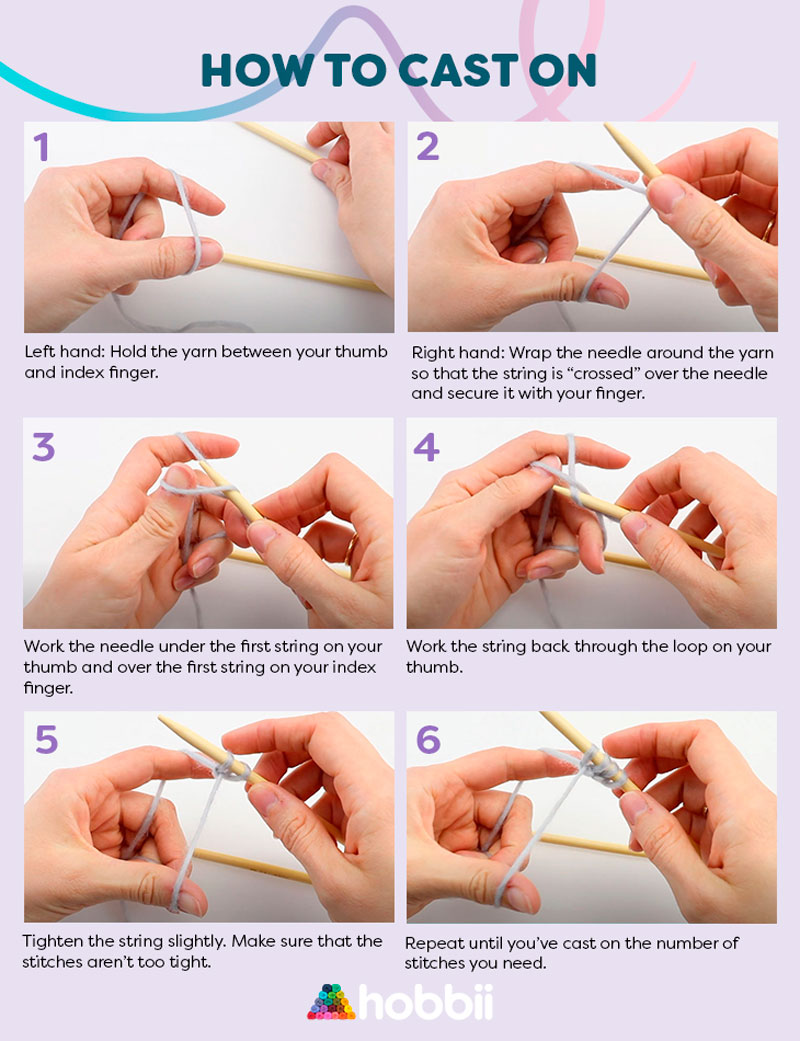If you want to learn to knit, you cannot avoid casting on stitches. Luckily, it is really easy. So, go get your knitting needles and yarn - and learn the very first step in any knitting project.
Video tip! Click on “Settings” (the little gear under the video ⚙) to change the language of the subtitles. You can also adjust the speed if you need to rewatch the technique at a slower pace.
Many knitters start with a slipknot when they cast on. However, this creates a knot that you can avoid with the technique we demonstrate in the video. With this technique, you will get a rounder, softer edge.
How to
- With your left hand: Hold the yarn between your thumb and index finger.
- With your right hand: Work your needle around the yarn so that the yarn is “crossed” under the needle and hold it in place.
- Work the needle under the first strand on your thumb and over the first strand on your index finger.
- Pull the yarn back through the loop on your thumb.
- Tighten slightly. Avoid tightening your stitches too much.
- Repeat until you have cast on the needed number of stitches.
Cast on loosely
It will be much easier for you to knit the first few rows if you do a loose cast-on. You may have read that you can make your cast-on looser if you use two needles instead of one when casting on stitches. But that actually makes your stitches longer and slightly saggy.
Instead, you can place your finger between the previous stitch and the one you are currently casting on. That way, you will get nice and loose stitches.
Tip! When starting a large project with many stitches it can be hard to keep track of the exact number of stitches. Use stitch markers to count while you cast on. You could, e.g., attach a new stitch marker for every 20 stitches you cast on. The marker can be put directly on your needle or in the stitch itself.


Leave a comment